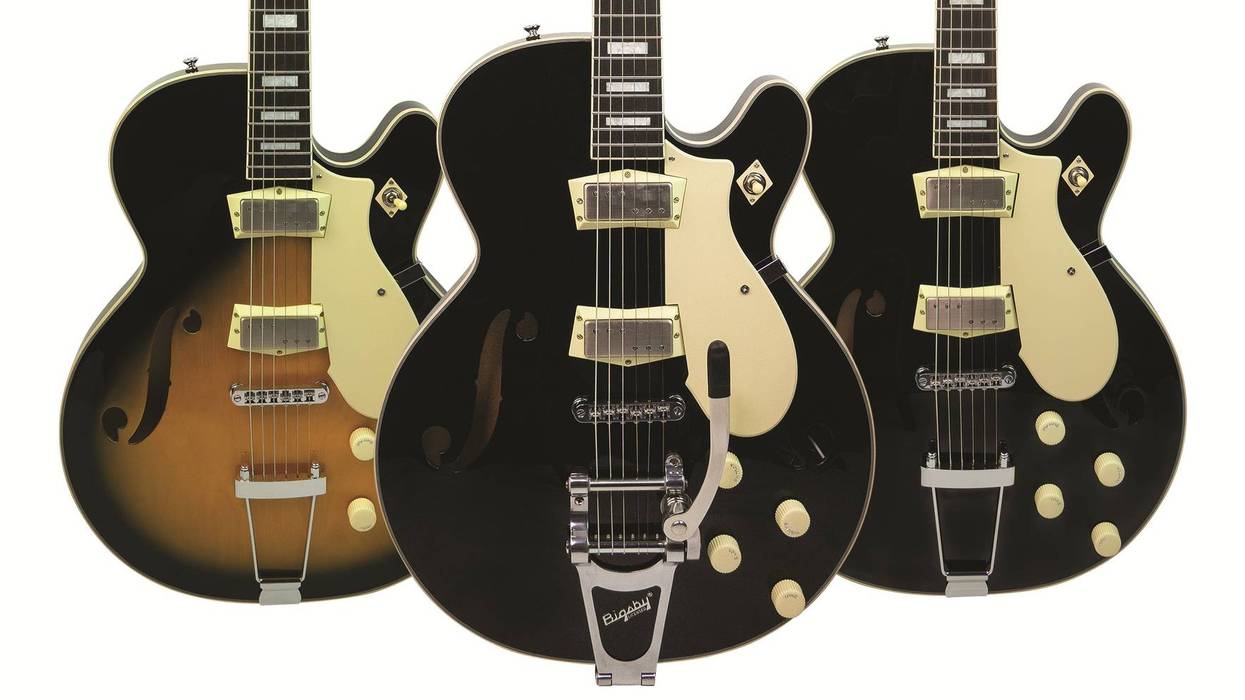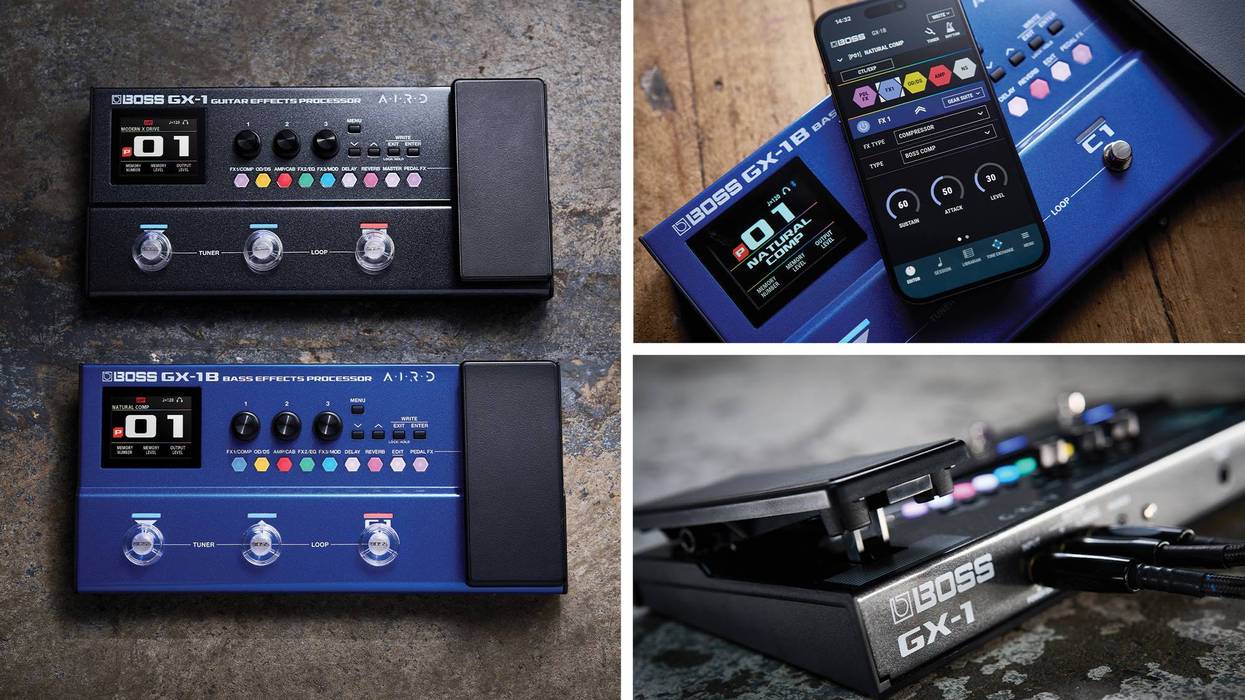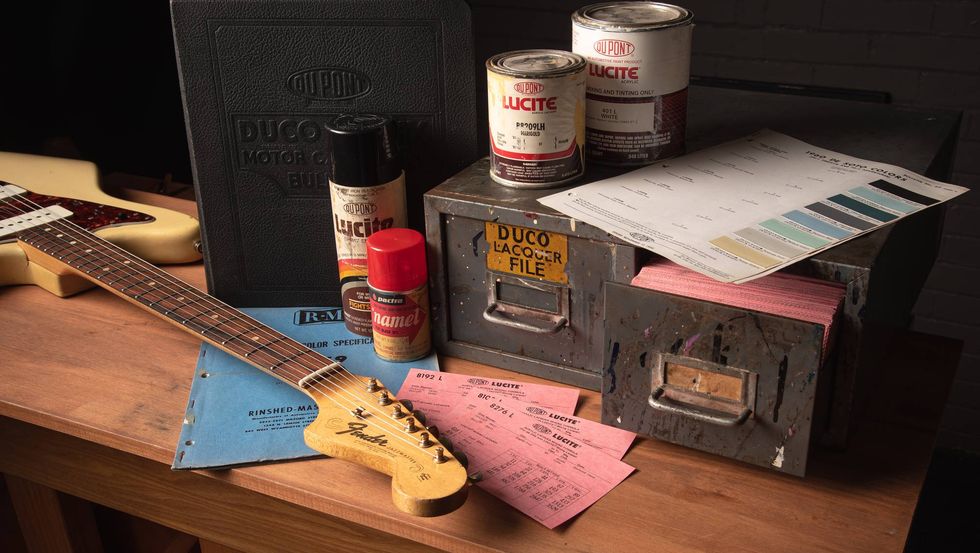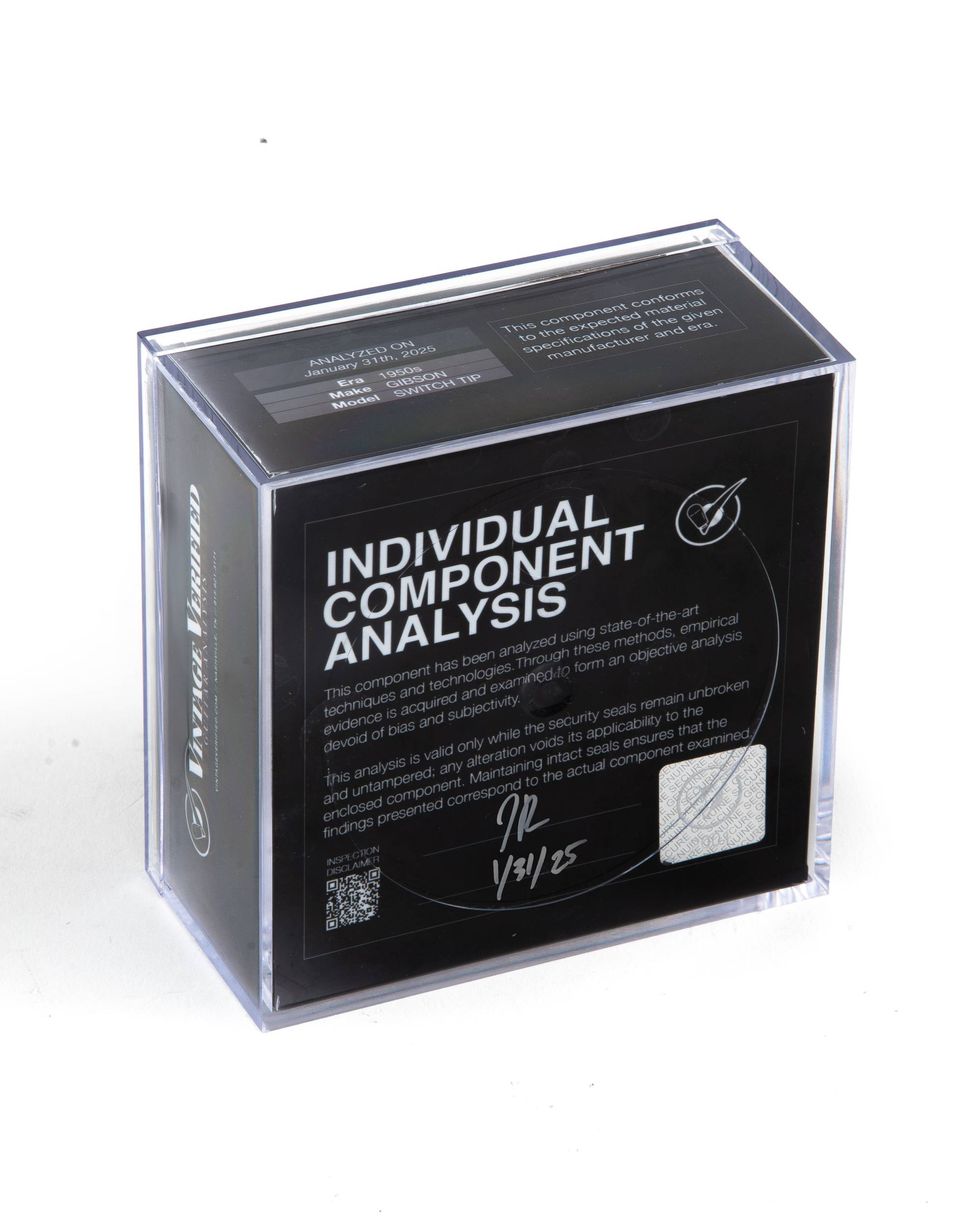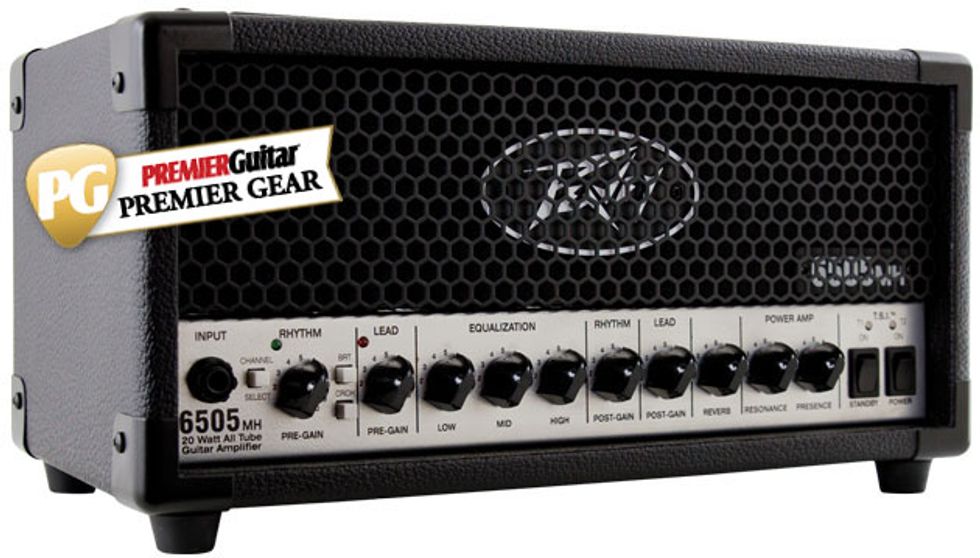
Mini amps and micro heads are a familiar sight these days. They’re even numerous enough that a shadowy (but very loud) subculture of high-gain micro metal amps has risen from the clutter. Peavey’s 6505 MH is one of the newest members of the “baby metal amp” tribe. This scalable, 20-watt, two-channel, dual-EL84 take on one of Peavey’s most iconic amps is a brutish little beast. And new features extend its utility beyond bedroom shredding sessions and into the realm of real-world recording and gigging.
Blood Brothers
If you’ve used a 6505 before, the MH’s layout should be familiar: channel select button, independent pre-gain and post-gain control knobs for both rhythm and lead channels (with bright and crunch buttons for the rhythm channel), reverb knob, and power amp resonance and presence control knobs. There are important differences, however. Unlike it’s relatively behemoth big bro’, the 6505 MH has a shared EQ section for both channels.
Completely new features include two tube status indicator lights situated directly above the standby and power buttons. If the light is green, all is good. If the light is red, the amp is running at less than optimal current and in need of re-bias. There’s also an auto reset feature that takes that tube out of the circuit so you can continue playing without damaging the amp.
The rear panel reveals more new features that you won’t see on the classic 6505: a voltage switch that lets you select between 20-watt, 5-watt, and 1-watt operation, a cabinet-and-mic-emulating direct output, and a USB output for direct recording. There are also buttons for speaker enable/defeat and ground lift, as well as a headphone jack.
Bedroom to Brown to Brutal
It’s no secret that the 6505 was born as Eddie Van Halen’s 5150, so for this test, I pulled out an old Peavey Wolfgang Standard and ran it straight into the amp, which I plugged into 4x12 and 1x12 cabinets, each equipped with Celestion Vintage 30 speakers.
I started my test with the 1-watt setting on the rhythm channel. Though this is ostensibly the amp’s clean channel, the 1-watt setting is fairly dirty with the pre-gain above two. Sometimes when amp manufacturers tout low-wattage amps as “bedroom-level,” they’re actually considerably louder. The 6505 MH’s rhythm channel, however, really offers useable bedroom volume levels up to about 7 on the post-gain knob.
Ratings
Pros:
Killer tones and functionality in a self-contained, flexible, and portable package.
Cons:
Shared EQ section.
Tones:
Ease of Use:
Build/Design:
Value:
$499
Peavey 6505 MH
peavey.com
Things got louder when I changed to the lead channel in 1-watt mode. The amp barks pretty fiercely all the way back to around 2 on the post-gain knob. Move it to the midway point and the amp becomes rabid. The sustain at this midpoint setting struck me more than once as mind-blowing for a little amp, and for lead playing, the fundamental sound is open, uncompressed, and well suited for fast, white-hot shredding. For rhythm parts, muted, single-note figures on the low strings can be articulated with razor-like precision.
Too Dirty to Be Clean
There’s not a huge range of low-gain sounds available from the lead channel, but if you roll your guitar’s volume knob way back, you can get part of the way there. For less aggressive overdriven sounds, I got better results by using the rhythm channel’s crunch mode, which offers terrific low-to-mid gain sounds. With the pre-gain knob at about 5, you get a hint of dirt. At 6 and beyond, a distinct shift to the dirty side of the spectrum takes place—perfect for stinging blues-rock leads.
In 5-watt and 20-watt settings, the rhythm channel gives you much more clean headroom. On the lead channel, though, you leave “don’t disturb the neighbors” territory behind and escalate to gig-level volumes. Don’t be fooled by the amp’s diminutive size: The 6505 MH can reach ear-frying levels.
Throw Away Them Modelers, Son
The 6505 is often emulated in modeling amps. But Peavey added a USB output that might win back a few modeling converts. If you connect directly to a digital workstation, you get pure, unadulterated 6505 tones. To be honest, the purist in me was a little weirded out by the presence of a USB jack on an amp so rooted in a classic. Ultimately, though, its practicality outweighed any sentimental bias.
I ran the 6505 MH into my MacBook Pro through GarageBand, and the amp automatically appeared as an input device. No drivers were necessary—a major plus! With the built-in speaker defeat button engaged, I was able to crank the amp and record vicious tones late at night in the comfort of my room. For fans of 6505 tones who lack access to a soundproof space, it’s a killer way to capture the amp’s essence at any hour.
The Verdict
If you’re a fan of the 6505, this little demon merits a serious look. Its many output options and wide range of power configurations make it a super-practical and flexible choice for rehearsing, recording, and just about any gig where you won’t be fighting another guitarist with a 200-watt stack. The amp’s compact size and light weight means you can easily take this little tone machine anywhere you go. And at $499, this micro metal monster is a steal.












